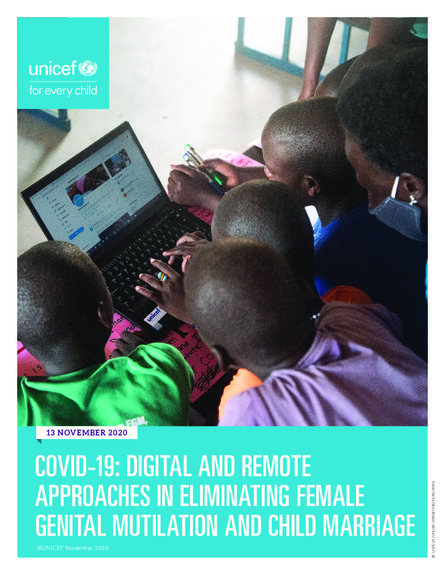
Digital information technologies and social media platforms have become important means of communication used by UNICEF and its partners. The physical distancing requirements during the COVID-19 pandemic have further strengthened reliance on mass media, social media and mobile technology as a way of reaching and engaging with intended audiences. Even where access to digital resources remains limited, country programmes are launching innovative approaches to continue social and behaviour change activities despite the physical distancing challenge, combining new and more traditional communication methods. This guidance note is designed to support country programmes to conduct quality, evidence-based, meaningful and measurable engagement for prevention of harmful practices programming, even when interpersonal communication is not possible. In particular, this note will:
- Outline commonly used digital communications resources and their functions
- Provide insights into information that can help design and/or refine behavioural and social norms programming for digital approaches
- Highlight a series of tips for conducting effective digital engagement activities
- Outline complementary channels to enhance the reach of digital approaches
- Review areas for monitoring and evaluation of digital activities
- Point readers to relevant risk communication and community engagement (RCCE) resources
- Summarize key considerations for choosing digital approaches